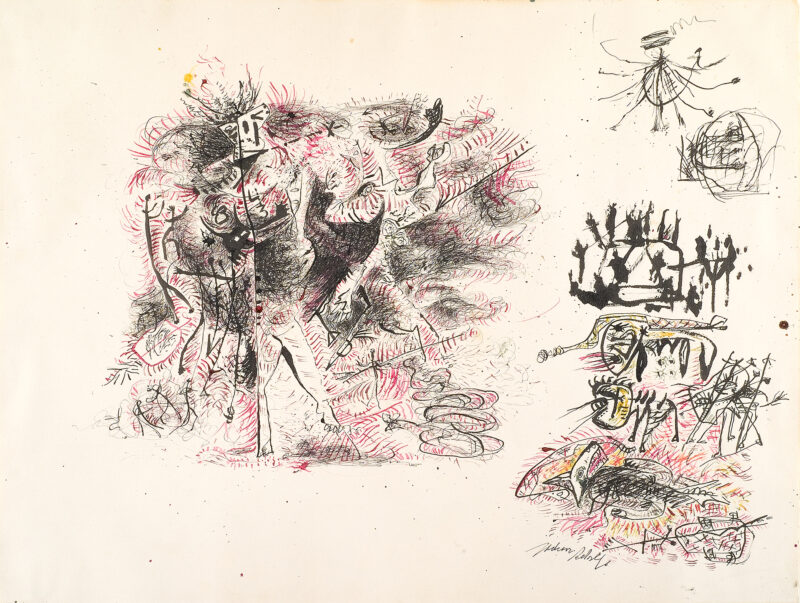
Untitled
Pollock, Jackson
1944
Artwork Information
-
Title:
Untitled
-
Artist:
Pollock, Jackson
-
Artist Bio:
American, 1912–1956
-
Date:
1944
-
Medium:
Ink on paper
-
Dimensions:
18 3/4 x 24 3/4 inches
-
Credit Line:
Wichita Art Museum, Gift of S.O. Bud and Louise Beren, and Peter Beren
-
Object Number:
1983.67
-
Display:
Not Currently on Display
About the Artwork
Jackson Pollock
American, 1912–1956
Untitled, 1944
Ink
Wichita Art Museum, Gift of S.O. Bud and Louise Beren, and Peter Beren
1983.67
Probing into the sub-conscious levels of the human mind in search of new inspirational sources and of an expanded understanding of the nature of creativity commanded the attention not only of psychologists but also of artists during much of the early 20th century, especially in the period between the two wars. This attention led inevitably to a heightened interest in the strange relationships experienced in dreams as well as in a serious study of folk art, the art of the mentally disturbed and the art of children. All of these interests had far-reaching significance in the rise of surrealism which captivated the minds of many artists of the period both here and in Europe. And by the mid 1940s, aspects of surrealism became wedded with pure abstraction, often culminating in a movement known as abstract expressionism of which Jackson Pollock was one of the most noted exponents.
This untitled colored ink drawing by Jackson Pollock was executed in 1945 and precedes Pollock’s first fully abstract expressionist painting by only a few years. What is important is that the seeds of Pollock’s later and more mature method are clearly in evidence here. At the right, six small doodle-like sketches are vertically arranged. But the most interesting section of the drawing is perhaps the large mass at the left and center, densely filled with strange forms and ambiguous shapes which have been almost entirely obliterated by an overdrawn web of scribble lines and dark smudges. Interpreted psychologically, such a drawing may represent the artist’s private associations with reality from which he withdraws by wiping-out the images of reality that disclose his fears and anxieties.
An especially interesting feature is the cubist-like space produced by the strong line dividing the central mass of the drawing and cutting through the lower half
of a human figure. It is also of special interest that the forms which most frequently appear are, on the one hand, the sexually suggestive arrows and, on the other hand, the coiled snake and the snarling beast which as found in many cultures, are often regarded as archetypal images of evil and death.
That Pollock himself frequently suffered psychological illness is a well-known fact that might well explain many of the strange dislocations found in his paintings. But at another level of awareness, the withdrawal suggested here is in one sense very much an expression of alienation that characterizes the outlook of many creative minds of 20th century society where fears of destruction and the horrors of total annihilation inevitably find an outlet in works of art.
Jackson Pollock was born in 1912 in Cody, Wyoming and in 1930 began to study at the Art Students League in New York under Thomas Hart Benton. During the 1930s he suffered from extreme alcoholism and was under psychiatric care for extended periods throughout his career. In the mid ’40s and early 1950s, he gained much notoriety as the first American Action Painter basing his approach on early experiments such as we find in this drawing. Tragically, Pollock was killed in an automobile accident in 1956 in East Hampton, New York.